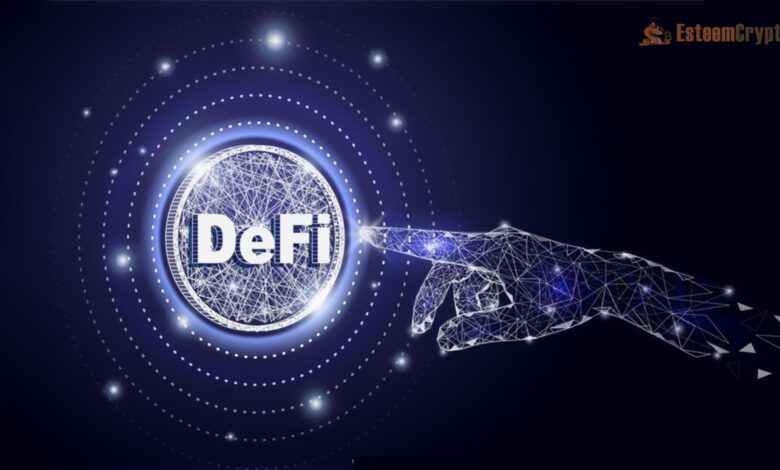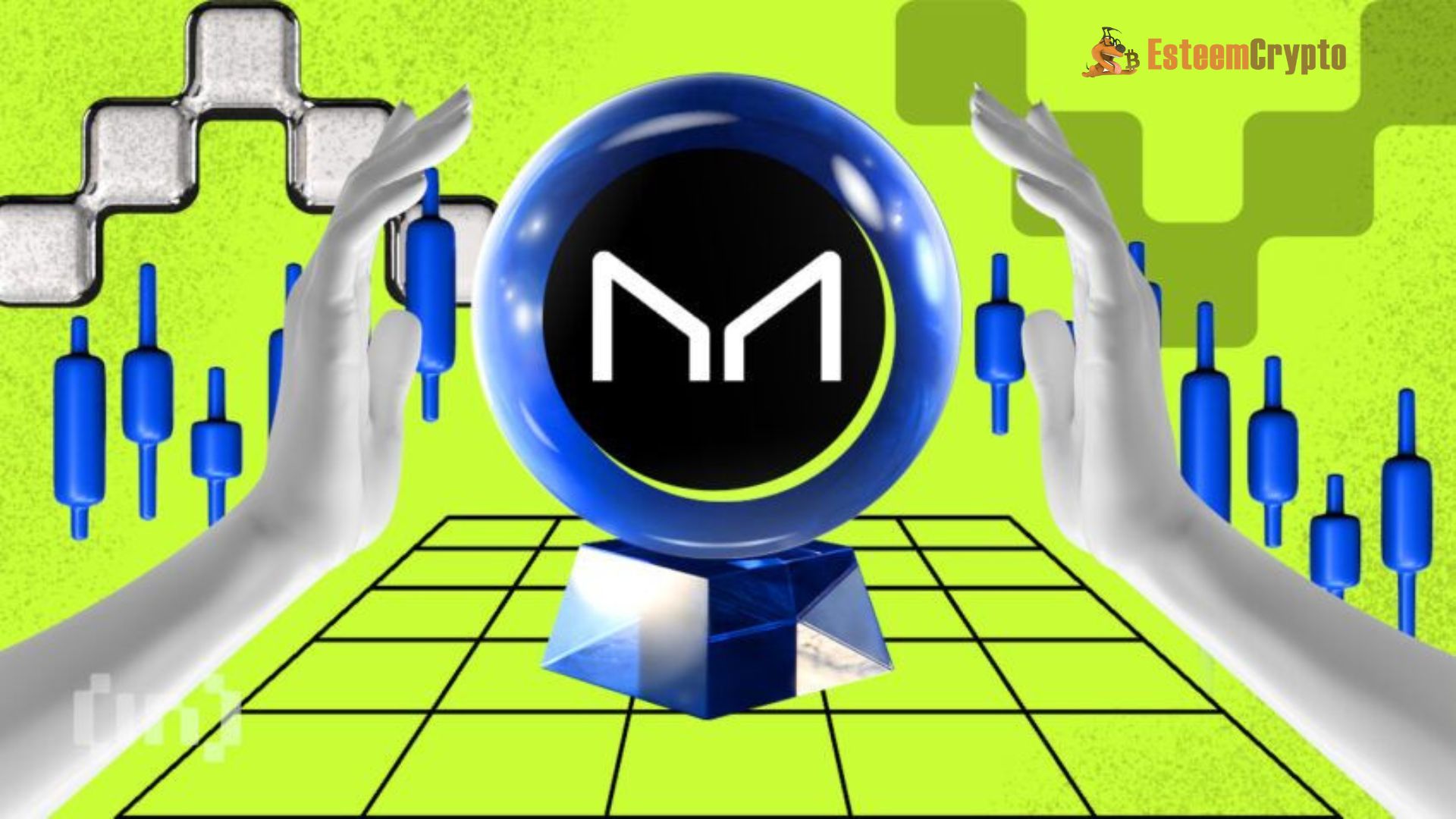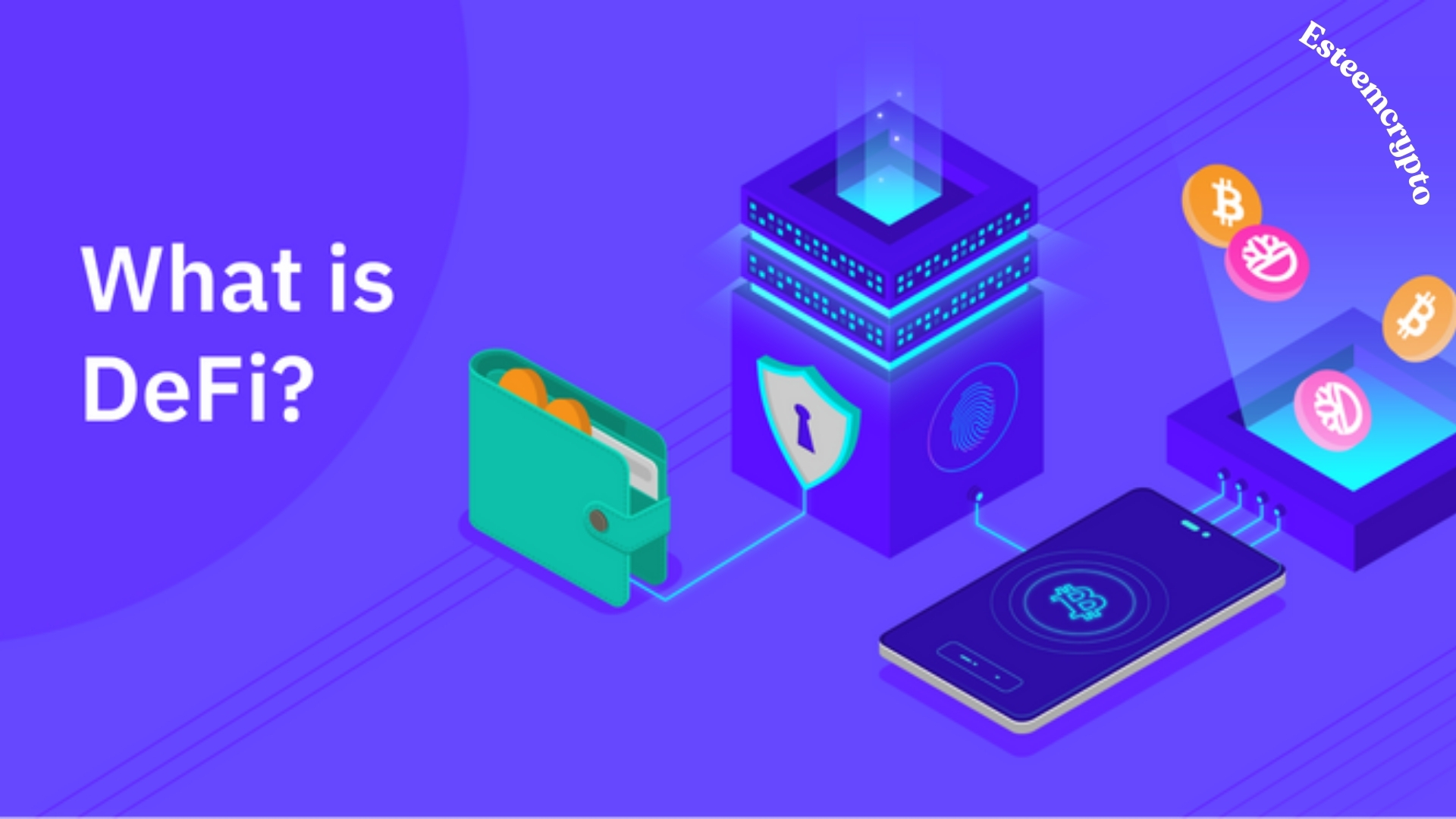DeFi Protocols: A Comprehensive Overview By Esteemcrypto

DeFi Protocols: Among the many revolutionary and fast-expanding areas of blockchain and cryptocurrency, decentralized finance (DeFi) stands out. The DeFi protocols, based on Ethereum and other decentralized blockchain networks, remove the need for banks and brokers in the financial services industry. Users can lend, borrow, trade, and invest directly with one another. DeFi’s stated goal is to democratize access to financial services by making them more open, secure, and user-friendly for everyone with an internet connection. In this essay, we will go into the basics of DeFi protocols, covering their main features, common applications, and their advantages and disadvantages.
What Are DeFi Protocols?
DeFi protocols refer to the smart contracts and decentralized applications (dApps) that enable financial activities on blockchain networks. Unlike traditional financial systems that rely on central authorities, DeFi operates on decentralized, permissionless, and trustless frameworks where users interact directly. Smart contracts, which are self-executing contracts with predefined rules, automate these interactions and ensure that transactions are transparent and secure.
The decentralized nature of DeFi protocols ensures that no single entity has control over the system, reducing the risk of censorship, fraud, and inefficiency. These protocols operate 24/7, providing users with continuous access to financial services.
Key Components of DeFi Protocols
DeFi protocols are built on several fundamental components, each contributing to their functionality and success. Some of the key components include:
Smart Contracts
Smart contracts are the backbone of DeFi protocols. These are self-executing contracts with code that automatically enforces the terms and conditions of the agreement. Smart contracts eliminate the need for intermediaries, as they can independently execute transactions based on predefined rules. For example, in a DeFi lending platform, a smart contract can automatically match lenders with borrowers and facilitate the loan agreement without requiring a bank.
Liquidity Pools
Liquidity pools are essential to decentralized exchanges (DEXs) and other DeFi protocols. They are collections of cryptocurrency tokens locked in a smart contract to facilitate trading, lending, or staking. Users who provide liquidity to these pools are called liquidity providers (LPs) and earn rewards, usually through transaction fees or governance tokens. Liquidity pools enable users to trade assets directly with the pool rather than relying on an order book system.
Automated Market Makers (AMMs)
Automated Market Makers (AMMs) are a type of protocol used in decentralized exchanges (DEXs) to set the price of assets. Instead of matching buyers and sellers like traditional exchanges, AMMs use algorithms to determine the price of tokens based on the ratio of tokens in a liquidity pool. Popular AMM protocols include Uniswap, SushiSwap, and Balancer. AMMs have revolutionized decentralized trading by providing continuous liquidity without needing centralized exchanges.
Governance Tokens
DeFi protocols often use governance tokens to decentralize decision-making. These tokens allow holders to vote on protocol changes, upgrades, and governance decisions. The more tokens a user holds, the more influence they have over the protocol’s direction. This democratic model is one of the core principles of DeFi, enabling users to participate in the protocol’s future.
Oracles
Oracles play a critical role in DeFi protocols by providing external data to smart contracts. Since blockchain networks are closed systems and cannot access real-world information, oracles bridge the gap by feeding data such as asset prices, interest rates, and market conditions into the blockchain. Chainlink is one of the most popular decentralized oracle networks used in DeFi protocols.
Popular DeFi Protocols
Several DeFi protocols have gained prominence due to their innovative approaches and wide adoption. Below are some of the most well-known and widely used DeFi protocols:
Uniswap
Uniswap is one of the leading decentralized exchanges (DEXs) that utilizes the AMM model to facilitate the trading of Ethereum-based tokens. Launched in 2018, Uniswap allows users to trade cryptocurrencies directly from their wallets without needing an order book or central authority. Liquidity providers earn a share of the transaction fees for supplying liquidity to the pools.
Aave
Users can earn interest by lending their assets or using them as collateral to borrow assets through the decentralized Aave protocol. Aave popularized the idea of short-term loans called “flash loans,” which require immediate repayment. Due to this breakthrough, new opportunities for arbitrage, debt restructuring, and other DeFi uses have emerged.
MakerDAO
MakerDAO is the protocol behind the DAI stablecoin, one of the most popular decentralized stablecoins. The Maker protocol allows users to lock Ethereum (ETH) as collateral in a smart contract and mint DAI, which is pegged to the US dollar. MakerDAO’s decentralized governance allows token holders to vote on key decisions, such as adjusting interest rates and risk parameters.
Compound
Compound is a decentralized lending platform that allows users to supply assets to liquidity pools and earn interest or borrow assets by providing collateral. Interest rates on Compound are determined algorithmically based on supply and demand. Like Aave, Compound also uses governance tokens (COMP) to decentralize decision-making and reward users who participate in governance.
Curve Finance
Curve is a decentralized exchange optimized for stablecoin trading. Its AMM algorithm minimizes slippage and provides low-cost trading for stablecoin pairs such as USDT/DAI or USDC/DAI. Curve has become a critical player in the DeFi ecosystem, especially for users who seek to trade stablecoins efficiently.
Benefits of DeFi Protocols
DeFi protocols offer several advantages over traditional financial systems, making them attractive to users worldwide:
Accessibility
DeFi protocols are open to anyone with an internet connection, regardless of geographical location or financial status. This is especially beneficial for individuals in underserved or underbanked regions who do not have access to traditional financial services.
Transparency
All transactions on DeFi protocols are recorded on a public blockchain, ensuring transparency and auditability. Users can verify transactions and track the movement of assets without relying on third parties.
Control
DeFi gives users full control over their assets, as no intermediaries are involved. Users hold the private keys to their wallets, meaning they are the sole owners of their funds.
Interoperability
Many DeFi protocols are built on Ethereum, which allows them to interact with each other seamlessly. This interoperability enables users to move assets across different protocols, enhancing the flexibility and efficiency of the ecosystem.
Innovation
DeFi is an innovative space that is constantly evolving. Developers are experimenting with new financial instruments, products, and services, driving the ecosystem’s growth and creating new user opportunities.
Challenges and Risks
While DeFi offers numerous benefits, it also comes with risks and challenges:
Smart Contract Vulnerabilities
DeFi protocols rely on smart contracts, and if a bug or vulnerability exists in the code, it can lead to significant losses. Several high-profile hacks and exploits have occurred in the DeFi space, highlighting the importance of thorough code audits and security measures.
Regulatory Uncertainty
The decentralized nature of DeFi raises questions about regulatory oversight. Many governments are still grappling with how to regulate DeFi protocols, which operate outside traditional financial frameworks. Unclear or overly restrictive regulations could stifle innovation or create legal risks for users.
Liquidity Risks
Liquidity is essential for DeFi protocols to function smoothly. Low liquidity can lead to high slippage, increased volatility, and challenges for users looking to execute large trades. Additionally, liquidity providers may face impermanent loss, where the value of their assets in a liquidity pool changes due to price fluctuations.
User Experience
DeFi protocols are often complex and require users to understand blockchain technology, wallets, and gas fees. This can create a steep learning curve for newcomers and limit broader adoption.
The Future of DeFi
Despite the challenges, the future of DeFi looks promising. The DeFi space is evolving rapidly, with new protocols, products, and use cases emerging regularly. Innovations such as layer-2 scaling solutions, cross-chain interoperability, and decentralized identity verification could further enhance the DeFi ecosystem.
As DeFi matures, it has the potential to revolutionize traditional financial systems by providing greater access, efficiency, and inclusivity. Developing decentralized insurance, prediction markets, and synthetic assets could expand the range of financial services available in the DeFi space.
Conclusion
DeFi protocols represent a paradigm shift in the world of finance. By leveraging blockchain technology and smart contracts, DeFi eliminates the need for intermediaries, creating a more open, transparent, and accessible financial system. While challenges such as security, regulation, and user experience remain, the growth and innovation in the DeFi space suggest that decentralized finance is here to stay. As more users and developers enter the ecosystem, DeFi has the potential to reshape the global financial landscape and provide new opportunities for financial inclusion and empowerment.




